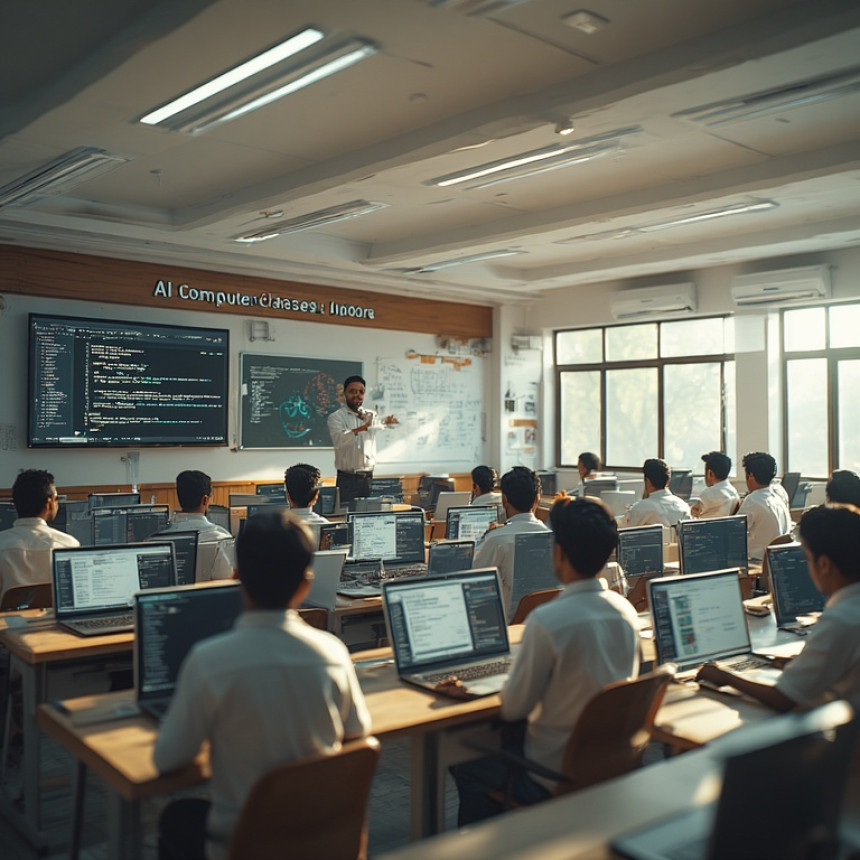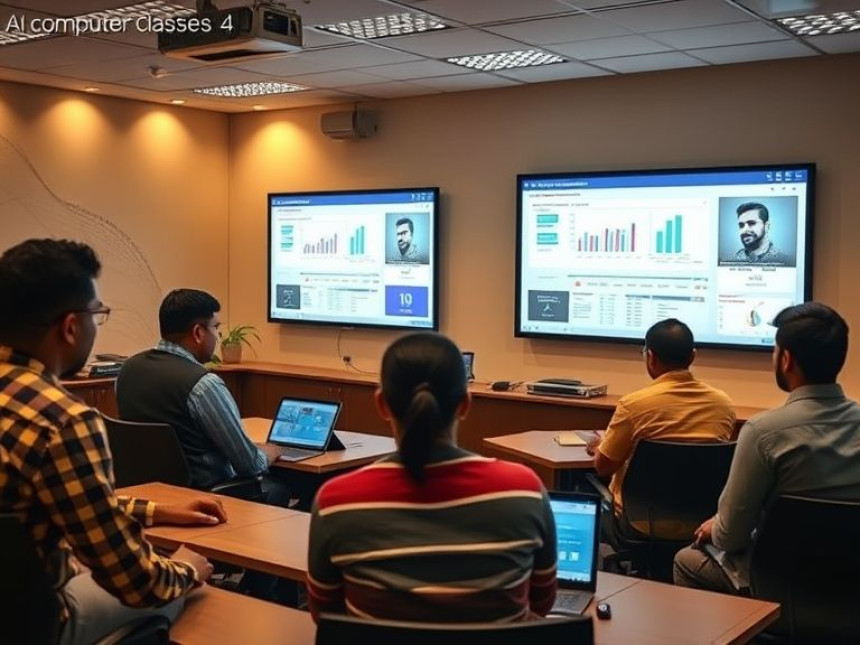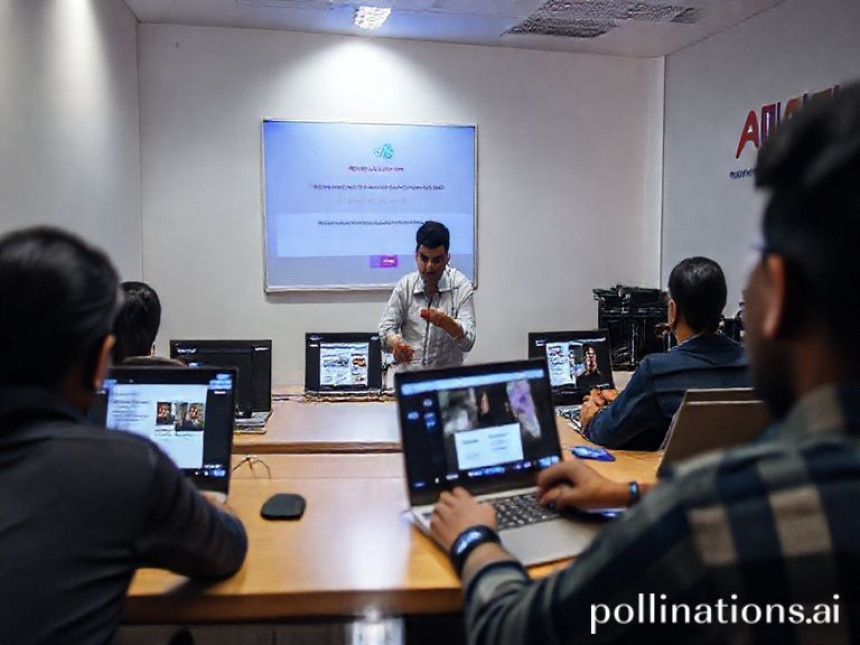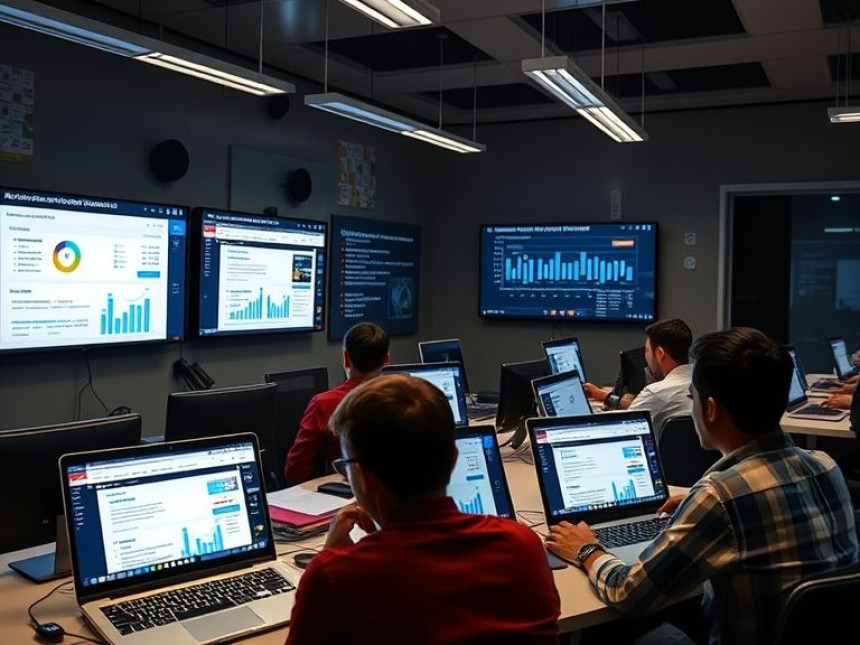
🤖 Hands-On: Fine-Tuning Basics for Custom Models
Hands-On: Fine-Tuning Basics for Custom Models. Get practical lessons and hands-on examples at AIComputerClasses in Indore to master artificial intelligence (AI) skills quickly. Includes references to tools like ChatGPT, Power BI, Excel, Figma, or Python where appropriate. This article from AIComputerClasses Indore breaks down hands-on: fine-tuning basics for custom models into actionable steps. Ideal for beginners and working professionals seeking fast skill gains.
🤖 Hands-On: Fine-Tuning Basics for Custom ModelsIn the fast-moving world of Artificial Intelligence (AI), fine-tuning pre-trained models has become one of the most powerful and time-saving skills. Instead of training models from scratch, professionals today leverage pre-trained AI systems (like GPT, BERT, or ResNet) and customize them for specific business or research goals.
At AI Computer Classes – Indore, learners explore how to fine-tune models efficiently using real-world datasets and Python tools, building a bridge between theory and hands-on industry applications.
Let’s dive deep into the step-by-step basics of fine-tuning AI models and see how you can master this skill to supercharge your AI projects.
Fine-tuning means taking an existing pre-trained model and adjusting it to work better on your custom dataset or specific task.
For example:
- A general image classifier → can be fine-tuned to detect “ripe vs. unripe fruits.”
- A language model → can be fine-tuned for “customer support responses.”
- A speech-to-text model → can adapt to recognize Indian English accents.
💡 Think of fine-tuning as teaching an expert to specialize in your field.
Fine-tuning offers huge benefits:
✅ Saves time & resources – You start from a pre-trained model instead of training from scratch.
✅ Improves accuracy – Model learns your data’s unique patterns.
✅ Reduces computation – Uses fewer epochs and less data.
✅ Customizes behavior – Makes AI systems domain-specific.
🚀 With fine-tuning, you can build high-performance models even with limited datasets.🧩 Step 1: Choose the Right Pre-Trained Model
The first step is selecting a base model aligned with your task:
Task TypeRecommended ModelLibraryText classificationBERT, DistilBERTHugging Face TransformersChatbotsGPT modelsOpenAI or Hugging FaceImage recognitionResNet, EfficientNetPyTorch or TensorFlowSpeech recognitionWhisperOpenAIObject detectionYOLO, DETRUltralytics or PyTorch
💡 Tip: Start with smaller, efficient models like DistilBERT or MobileNet to practice.
Your dataset defines what your model learns. Ensure it’s:
- Clean and labeled correctly
- Balanced (no class bias)
- Formatted for the model type (text, image, or audio)
text,label "I love AI Computer Classes!",positive "This course is too advanced.",negative
For images, use separate folders:
dataset/ ├── cats/ └── dogs/
📘 AI Computer Classes students practice cleaning, labeling, and preparing datasets hands-on using Python and Pandas.
Install essential tools for fine-tuning:
pip install torch torchvision transformers datasets
Import libraries in Python:
from transformers import AutoModelForSequenceClassification, Trainer, TrainingArguments, AutoTokenizer from datasets import load_dataset import torch
Use Google Colab or Jupyter Notebook for GPU-powered experiments.
Example for text classification using BERT:
from transformers import AutoTokenizer
tokenizer = AutoTokenizer.from_pretrained("bert-base-uncased")
def tokenize_data(example):
return tokenizer(example["text"], truncation=True, padding="max_length")
dataset = load_dataset("csv", data_files={"train": "train.csv", "test": "test.csv"})
tokenized_dataset = dataset.map(tokenize_data, batched=True)
💡 Tokenization converts human-readable text into model-readable format.
from transformers import AutoModelForSequenceClassification, Trainer, TrainingArguments
model = AutoModelForSequenceClassification.from_pretrained("bert-base-uncased", num_labels=2)
training_args = TrainingArguments(
output_dir="./results",
evaluation_strategy="epoch",
learning_rate=2e-5,
per_device_train_batch_size=8,
num_train_epochs=3
)
trainer = Trainer(
model=model,
args=training_args,
train_dataset=tokenized_dataset["train"],
eval_dataset=tokenized_dataset["test"]
)
trainer.train()
This simple script fine-tunes BERT to understand your dataset.
After training, evaluate the model’s performance:
results = trainer.evaluate() print(results)
Metrics to focus on:
- Accuracy
- Precision
- Recall
- F1 Score
🎯 Higher F1 scores mean better real-world performance.
Save your fine-tuned model:
model.save_pretrained("./custom-model")
tokenizer.save_pretrained("./custom-model")
You can then:
- Deploy it as an API using FastAPI or Flask
- Host it on Hugging Face Hub
- Use it in chatbots, recommendation systems, or analysis apps
💡 Students at AI Computer Classes learn to integrate fine-tuned models into real-world applications using Python frameworks.
Fine-tuning is an iterative process.
Try adjusting:
- Learning rate
- Batch size
- Number of epochs
- Layers to freeze/unfreeze
Even small changes can drastically improve performance.
📘 Use tools like TensorBoard to visualize loss curves and model progress.
At AI Computer Classes, you don’t just learn theory — you practice hands-on.
Our AI training programs cover:
- Fine-tuning text and image models
- AI ethics and bias control
- Python for data processing
- Deployment and testing of AI models
💬 Learn how AI powers real-world projects, from chatbots to sentiment analysis — all with practical exercises.
👉 Join our latest AI batch now!
📍 Old Palasia, Indore
🌟 ConclusionFine-tuning is the secret sauce behind modern AI applications — from ChatGPT-like assistants to advanced analytics models. By mastering this skill, you unlock the power to customize intelligence for any domain or dataset.
💪 Start today at AI Computer Classes – Indore, where every learner becomes an AI innovator!
📞 Contact AI Computer Classes – Indore
✉ Email: hello@aicomputerclasses.com
📱 Phone: +91 91113 33255
📍 Address: 208, Captain CS Naidu Building, near Greater Kailash Road, opposite School of Excellence For Eye, Opposite Grotto Arcade, Old Palasia, Indore, Madhya Pradesh 452018
🌐 Website: www.aicomputerclasses.com

🚀 Use SEO Tools for Competitive Analysis — Workflow
Use SEO Tools for Competitive Analysis — Workflow. Get practical lessons and hands-on exam...



